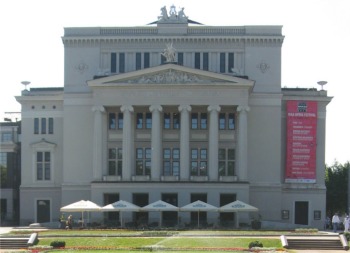 National Opera |
 Freedom Monument |
I made my way along deserted streets to the bus station in order to catch the 06:30 coach. Soon I found myself travelling through endless forests, with occasional lakes and pastureland, but strangely no sign of livestock. Eventually the coach entered the urban sprawl surrounding Riga, the capital of Latvia and the largest city in the Baltic states. The coach crawled through road works, and past a lorry that amazingly had not spotted the works, and was now stuck in a hole, surrounded by paparazzi. Rush hour was still evident but the coach managed to find a way to the coach terminal, and I alighted into a hustle and bustle, and set about ascertaining what Riga had to offer. Once armed with maps, I set forth to cram it all in within eight hours.
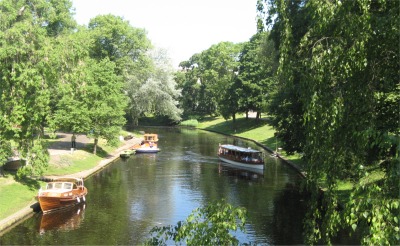 Canal in the Park |
I followed the charming canal for a way before turning off to the Freedom Monument. This major landmark is one of the most outstanding monuments to Latvia's history, architecture and art. It was built in Riga, using funds donated by the people, as a symbol of Latvia's freedom, in testimony to the respect and love of the entire nation for fatherland and freedom.
The aspiration to build the Freedom Monument arose during the culmination of Latvia's Battles of Independence, i.e. in 1920. However, as a result of a protracted tender, the foundation stone was only laid in 1931.
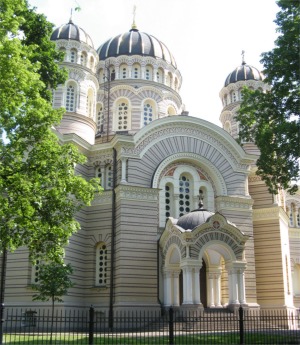 Cathedral |
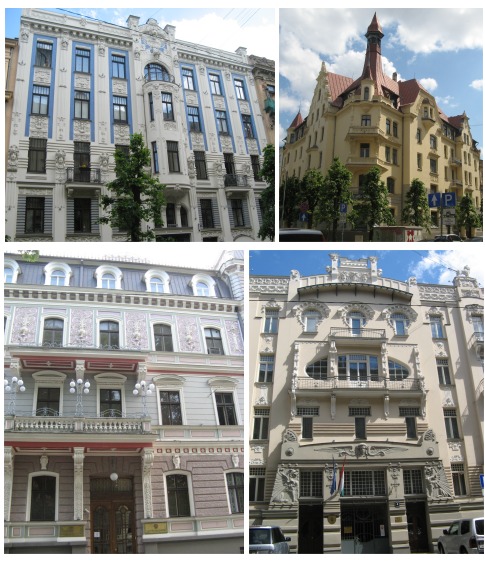 Art Nouveau |
Crossing a central park and the canal again, I made my way across the Vansu Tilts bridge, a famous landmark for the city. This magnificent suspension bridge afforded me views up and down the Daugava River and across the city. A couple of cruise ships were taking a lazy break while their passengers were no doubt enjoying a guided whistle-stop tour of the city. In their shadow, a dredger was hoovering up silt from the river bed, and pumping it, through a pipe attached to a floating boom, to the shore where it gushed out as a fountain of grey/brown slurry.
 Vansu Tilts Bridge |
Riga Castle was situated on the eastern side of the bridge. It had served as the seat of various rulers throughout the centuries. After independence, it was restored in 1991, and became the primary workplace of the President of Latvia.
 Riga Castle |
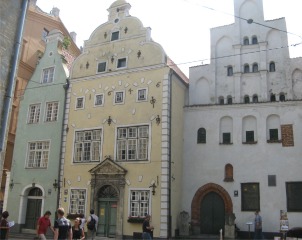 The Three Brothers |
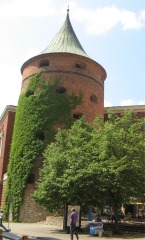 Powder Tower |
I strolled along Livu Square. Built last century after World War II, an interesting complex of 18th century residential buildings had been preserved here. The square buzzed, with numerous outdoor cafes and buskers doing good trade.
 Livu Square |
 Dome Square with Dome Cathedral |
The House of the Blackheads was built in the 14th century, and belonged to the Guild of Unmarried Merchants. At one time it was the richest and most prestigious venue in the whole city. It was destroyed and pillaged in World War II, but was rebuilt in 1999, with an exact copy of the magnificent Dutch Renaissance facade.
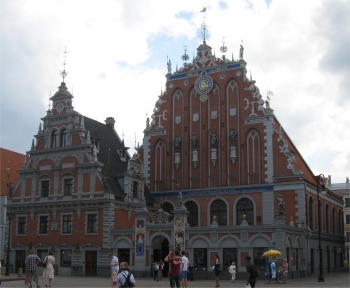 House of the Blackheads |
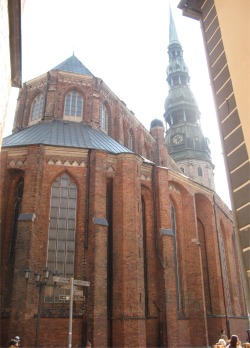 St Peter's Church |
Near to the square lay St Peter's Church. This imposing red brick church was first built from timber in 1209, then in stone. The interior was fairly plain and devoid of the rich ornaments found in Orthodox churches. Ethereal chants echoing around the building made up for the lack of glitz. Inside was a superb exhibition of photographs, primarily landscapes, seascapes and portraits, which kept me occupied for quite some time. I was also able to gain access to a viewing platform affording splendid views across the city.
 Daugave River and the Central Market |
Outside was yet another "village" of stalls. Here the heady scent of seasonal fruit combined with flowers was quite intoxicating. The whole area was a paradise for people watching.
Just by the market was the Spikeri creative quarter. This was home to a number of cultural creative groups as well as cafes and restaurants. Art exhibitions and high calibre music concerts were also held in the concert hall.
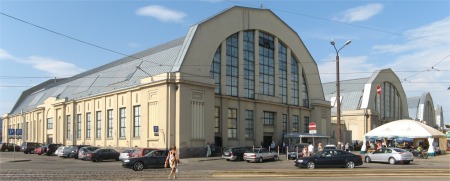 Central Market |
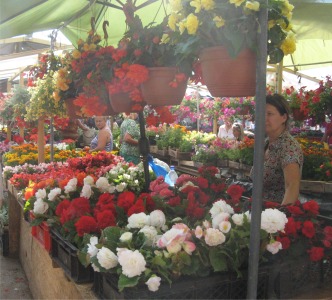 Flower Stalls |
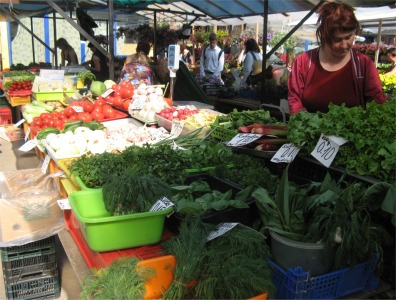 Vegetable Stalls |
Riga sustained heavy damage during the war. 35% of the Latvian population had either perished or been mass deported to Siberia. After the war, Russia ruled with an iron fist. Farms were brought into collectives. Farmers with farms that were considered excessively large were stripped of everything they had and were deported with their families to Siberia. Latvians suffered miserably until independence in 1991.
 Spikeri Creative Quarter |
He explained that the Russians had built factories in Latvia, but these were mainly for weapons and missile production, and the output was sent back to Russia. Latvia was just a big factory but the country was not gaining from this. The work regime was pretty grim. Workers worked the standard five days per week, for very low pay, but the pay didn't really matter since there was nothing in the shops for folk to buy. Grievances arose when drunkards and slackers did not pull their weight, but were still paid the same as hard workers (Russia always had a policy of everyone having a job to do). As well as the five days through the week, workers had to work on Saturdays for the good of the state for free. In addition they had to donate time for free during the summer months in order to work on the collectives.
Latvians looked to Estonia with envy, since the Estonians seemed to have managed to "sweep out the rubbish", and few Russians remained. Latvia still had KGB members in positions of power, and the general consensus was that Russians and corruption were synonymous.
I was deeply moved by the museum, and the stories I had read and heard about life in an occupied country were appalling. Britain had suffered during the war, but fortunately it never had to suffer the miseries of occupation experienced by the Baltic states. The young chap I spoke to must have been a child when his country gained its independence, but his passion about the atrocities, instilled in him by his parents and grandparents, fiercely shone through. This seemed a fitting ending to my visit to Riga.
On the coach journey back, I had plenty of time to reflect on the day. Riga was a thriving, vibrant and energetic city. It had done well to recover from the devastations of the war, and had restored itself admirably. The locals seemed happy enough, but as a result of the terrible oppression suffered, eye contact, from those who witnessed those days, was hard to establish.
